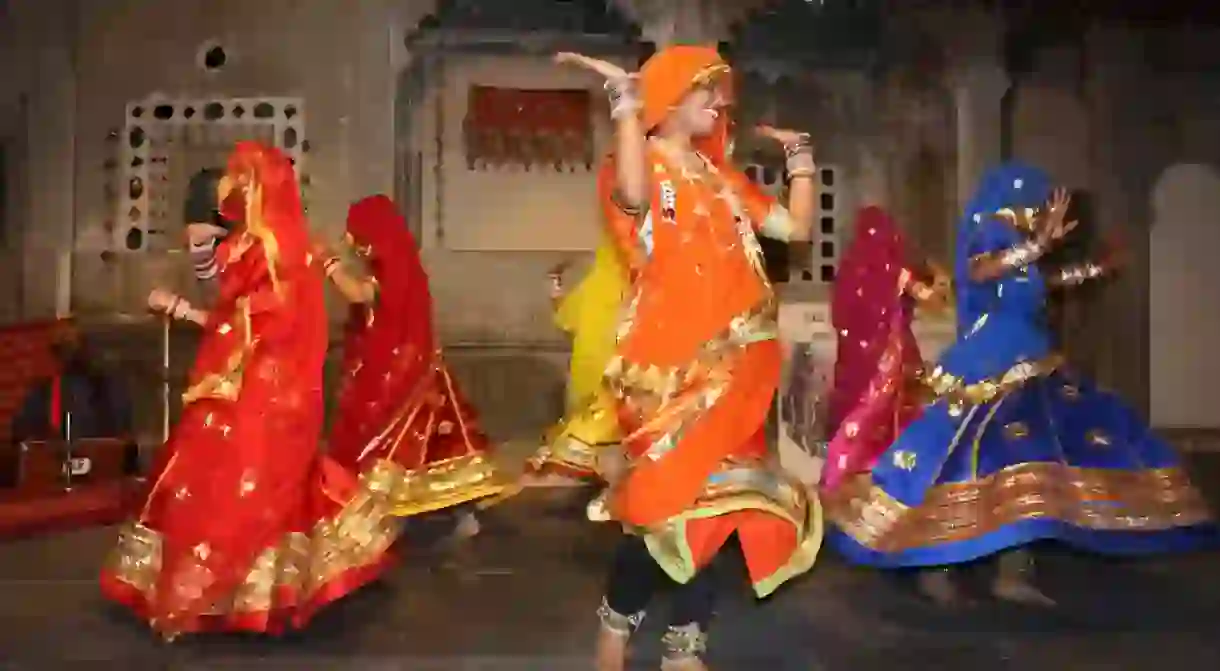Why Ghoomar is One of the World's Best Local Dances

Ghoomar is a traditional folk dance synonymous with the Indian state of Rajasthan. The dance is performed by women with elan and grace and includes swaying movements, accentuated with elegant traditional outfits. It has gained a lot of recognition and has been ranked as one of the world’s best local dances. Here’s everything you need to know about it.
A brief history
As a state that is home to numerous tribes and indigenous cultures, Rajasthan has several traditional folk dances to call its own. However, it is Ghoomar that reigns supreme in the royal state. Its name comes from the word ghoomna, meaning pirouetting or spinning around.
Also known as Jhumar, this traditional rhythm was originally started by the Bhil community and performed for worshipping goddess Saraswati. The Kachwahas of Rajput clan, who reigned over Jaipur, defeated the Bhil tribe, but after a few years, both communities agreed to live in harmony with each other. The result was that the royal Rajput clan embraced some of the traditions and practices of the Bhils, including Ghoomar. And from then on, the dance was associated with royalty. Today, however, it is performed by most Rajasthani families, irrespective of their royal status, on special gatherings and festivals, such as Teej, Holi, the onset of monsoon season and the arrival of a newlywed bride at her marital house.
It is performed throughout the state and the major regions that are known for this dance form include Jodhpur, Udaipur, Kota and Bundi. Each region has its own distinct way of enacting the Ghoomar dance. Udaipur, for instance, adds a touch of Garba; in Jodhpur, the dance involves intense limb movements, while in the Kota and Bundi areas, they use catchy and melodic tunes to accompany the dance form.

Its significance: from being a symbol of womanhood to the essence of Rajasthan culture
Traditionally, Ghoomar wasn’t just an act of dancing and singing but was also meant to be symbolic of femininity. Young girls took part in this dance, making it known to everyone that they were stepping into womanhood. But today, this dance can be performed by women of all ages and is mostly cherished as a historically and culturally-rich entertainment form. It showcases the rich culture of Rajasthan through aesthetically pleasing movements and traditional attire.
Its traditional outfit
One feature that perhaps aids the enduring popularity of this traditional dance form is the beautiful and colourful costumes. Women wear ghagra (a long, flowing skirt embellished with mirrors, crystals, stones or thread work) and choli (a blouse). While the traditional dress is ornate in itself, women also wear heavy jewellery and accessories.

Its elegant and graceful moves
The dance is performed by a group of women, wearing a veil on their head and donning a traditional outfit. It can also be performed solo. The rhythm is upbeat and the women use graceful and elegant gestures, like pirouettes, finger snapping, beating palms and other hand and foot movements to maintain the tempo. There is one patent step that’s done by everyone, called ghoomna, which involves women twirling around while the ghagra creates a whirling effect. Some Ghoomar performers dance and gyrate with brass pitchers or earthen pots on their heads or use fire lamps.
The coordinated movements among women, along with their swirling colourful attire, make the dance intriguing to watch. Also, to accompany the dance, some men and women sing along, resulting in a beautiful harmony that leaves the spectator in awe. Check out this incredible traditional folk dance below:













